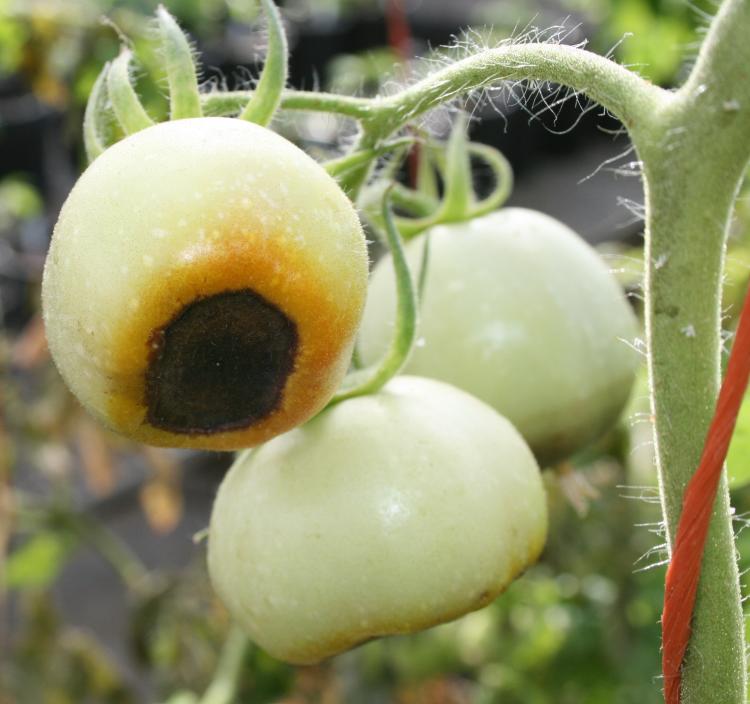
As the first tomatoes of the season ripen, a lot of gardeners find a dark, leathery spot on the fruit. The condition is called blossem end rot, aka BER, and it can also occur on peppers, squash and other vegetables.
Note it’s called a condition. Not a disease. Not an insect. The cause is irregular watering. Blossom end rot occurs when there’s not enough moisture in the tomato fruit to move calcium around. The black spot is a scar where the tomato was attached to the flower.
First fruits exhibit blossom end rot
Blossom end rot usually occurs on the first fruit produced. A plant’s fast growth and irregular watering is one cause. So is planting tomato plants when the soil is not warm enough. Other issues: drought, excessive heat and low humidity. Environmental conditions also discourage bee activity, which may reduce pollination of vegetables.
When gardeners see it and know that it has to do with a “calcium deficiency,” they add Tums, egg shells, Epsom salt, and other things to the soil. Because the next batch of fruit produced usually does not have blossom end rot, gardeners think the additives cured the problems.
Blossom end rot and calcium
Most soil has plenty of calcium available, but the mineral needs water for the roots to take it up and move through the plant and into the fruit. A lack of water means the calcium cannot move properly through the fruit, so it settles at the bottom of the fruit to form blossom end rot. One way to know the calcium content of your soil is to have it tested.
Water and blossom end rot
Plants need about 1 inch of water a week. A light mulch, such as shredded bark, chopped leaves or compost, helps the soil stay cooler and retain moisture. A mulch also helps control weeds.
Remember to harvest your veggies regularly to keep the plants producing. You can eat the fruit if you remove the blossom end rot. Don’t use damaged fruit in canning.